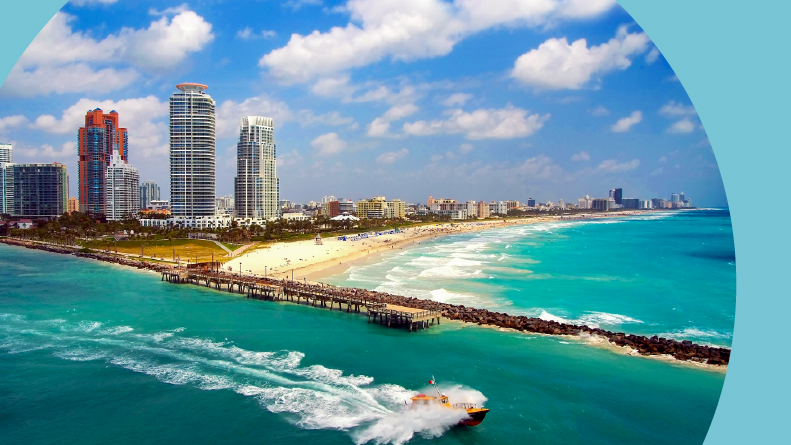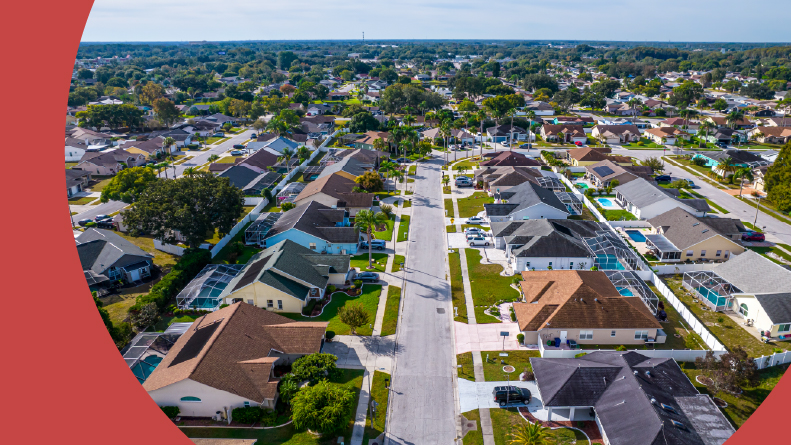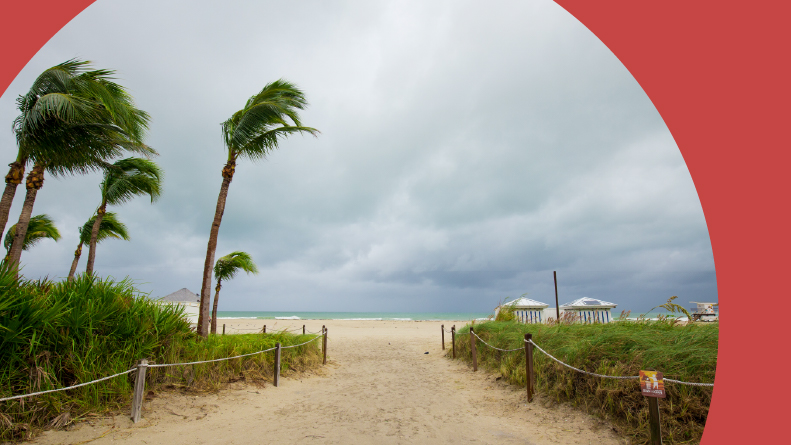If you’ve ever dreamed of spending your golden years in the Sunshine State, you’re not alone. Florida has long been one of the most popular retirement destinations in the U.S. With its warm weather, tax-friendly policies, and abundance of active adult communities, it’s easy to see why so many choose to call it home. But as living expenses shift, many are asking a key question: how much does it cost to retire in Florida today?
Between rising inflation and increasing insurance premiums tied to extreme weather, the financial side of retirement is changing. If you’re wondering whether retiring in Florida is still within reach, we’re here to help. This guide breaks down the latest costs—housing, taxes, healthcare, and more—so you can make a well-informed decision.
How Much Does It Cost to Retire in Florida?

As with any location, your lifestyle plans will have a big impact on how much you can expect to spend living in Florida. However, the average cost of living is a great starting point for planning your retirement budget.
According to RentCafe, the cost of living in Florida is only 2% higher than the national average. However, costs vary throughout the state. For example, the cost of living in larger cities like Miami and Fort Lauderdale is over 20% higher than in Jacksonville, Orlando, and Ocala (where costs are below the national average). To obtain a more realistic assessment of the costs associated with retiring in Florida in 2025, it is necessary to factor in the expenses of housing, as well as costs such as groceries, utilities, taxes, entertainment, and recreation.
While there’s no one-size-fits-all answer to what retirement in Florida costs, adding up the costs of necessities will give you an idea of what to expect. Once you have a ballpark figure, you can explore ways to cut costs without compromising your desired retirement lifestyle. Here’s the breakdown of average living costs in Florida for retirees:
Florida Housing Costs

On average, Florida residents pay around $1,860 a month for their mortgage, according to Motley Fool Money. However, the average doesn’t accurately represent every mortgage payment. Smaller homes or condos and those in smaller or less popular cities are typically cheaper.
55+ Housing Market in Florida
There are also hundreds of 55+ communities in Florida, many of which can help reduce the overall cost of living. Florida’s 55+ housing market is seeing some interesting changes in 2025. There are a lot more homes for sale (over 16,600 listings), which is nearly a 29% jump from last year, according to 55places.com data. At the same time, prices are starting to dip, with the median sale price now at $350,000, down about 7%. Fewer homes are selling too—just over 2,300, which is almost 9% less than the year before. So overall, the market is cooling off a bit, giving buyers more choices and possibly better deals than they’ve seen in a while.
For a close-up example of housing costs in a 55+ community in Florida, a one-bedroom, one-bath condo in Leisureville in Pompano Beach costing $114,900 is just under $600 a month for a buyer who made a 20% down payment (or $1,019 when taxes and HOA fees are included). If you’re looking for something a little larger, a two-bedroom, two-bath single-family home in Stone Creek in Ocala is only $1,419 per month, or $1,949 with taxes and HOA fees included.
Homeowners’ Association Fees

Most communities and condominium complexes that have shared common areas are governed by a homeowners’ association (HOA). These organizations collect fees that cover the cost of amenities and services within the community. These fees vary widely and are not based on the cost of the mortgage.
For example, a $100,000 two-bed two-bath condo in the Lime Bay community in Tamarac has a $576 HOA fee, while a $759,900 single-family home in The Villages has a $200 HOA fee. HOA fees can vary from less than $200 to over $700, making them difficult to predict. Be sure to ask about HOA fees and what they cover before settling on a home in any planned community.
55+ Community Amenities
Most active adult communities are equipped with a variety of onsite recreation and leisure opportunities. These offerings can range from community swimming pools and clubhouses to golf courses, lakes, fitness centers, arts & crafts facilities, restaurants, and more. Often, HOA fees cover the cost of amenities, but some communities charge additional membership fees.
Florida Home Insurance

While many living costs in Florida are around or below the national average, the Sunshine State is a notoriously challenging market for homeowners’ insurance due to risks of wind, flood, and hurricane damage.
According to Bankrate, the average cost of homeowners’ insurance in Florida is $5,695 per year (or about $475 each month) for a $300,000 dwelling. However, it can be substantially higher closer to the coastline, with average monthly prices reaching up to $700 a month or more in areas like West Palm Beach, Fort Lauderdale, and Hollywood.
Utilities and Groceries

Utilities
It’s easy to take the utilities we use daily for granted. Yet, forgetting to include these essentials can quickly derail your budget. The average cost of these utilities in Florida is about $521 a month, according to Move.org. Here’s the breakdown.
- Electricity: $129
- Natural gas: $109
- Water: $36
- Sewer: $42
- Trash: $63
- Streaming Services: $57
- Internet: $83
- Phone: $66
The use of some utilities will vary from house to house. For example, some homes don’t have natural gas but may pay higher electricity bills. Many active adult communities take care of trash pickup, allowing retirees to cut another expense.
Groceries
Soaring grocery costs are a big concern for retirees on a fixed income. Planning for your grocery budget is crucial to ensuring you have enough to keep food on the table and cover your expenses. According to World Population Review, the average weekly cost of groceries for Florida households is $287 weekly (or $1.150 a month), making it one of the most expensive factors in living costs.
Florida Taxes

No State Income Tax
Florida does not have any personal income tax, and this applies equally to Social Security benefits, pensions, IRA/401(k) withdrawals, investment income, and even military or public pensions. Florida is one of seven states free of income tax, making it highly attractive for retirees looking to maximize their income.
No Estate or Inheritance Tax
There are no state-level estate or inheritance taxes, allowing retirees to pass on their assets to heirs without Florida tax liabilities.
Property Taxes in Florida
Property taxes are another area where Florida retirees can cut costs. The median effective tax rate in Florida is 0.82%, which is less expensive than the national average of 0.90%, according to SmartAsset. Median annual property tax bills average about $2,386 annually, or around $198 a month. The exact amount of your yearly tax bill depends on factors like your home’s age and value.
Sales Tax and Local Surcharges
Florida’s statewide sales tax rate is 6%, but most counties add a local surtax that typically brings the total to around 7%. Some counties, particularly those with large tourist economies, may charge even more (up to 8.5% in rare cases). While this can add up for big-ticket purchases, it’s worth noting that essential items like groceries and prescription medications are exempt from sales tax, providing some relief for retirees on fixed incomes.
Vehicle-Related Fees
Although Florida doesn’t collect income tax, new residents should be aware of vehicle-related expenses. A one-time registration fee of $225 is charged when registering an out-of-state vehicle, and the cost of a Florida driver’s license is approximately $48, valid for eight years.
Additionally, vehicles purchased in Florida are subject to the state’s 6% sales tax, with potential county surtaxes applied as well. These costs can be a surprise for those relocating from states with lower vehicle fees, so it’s smart to budget for them as part of the moving process.
Adding Up the Costs To Plan Your Florida Retirement Budget
Florida is known as a retirement paradise for its sunny beaches, appealing environment, and warm weather. Yet, the cost of living in the Sunshine State can be surprisingly affordable if you search for ways to cut costs. While the average cost of living in Florida is just over $100,000 a year, most retirees can find locations where the cost of living is closer to $5,500 per month or even lower.
Understanding the cost of basic necessities is a great starting point for planning your retirement budget. However, you don’t want to forget entertainment costs! Finding an appealing home in an active adult community is one way retirees can cut costs in Florida, as some costs are included.
If retirement in Florida is your dream, we can help. Contact 55places.com today to learn more about how we can help you find your ideal 55+ community!








